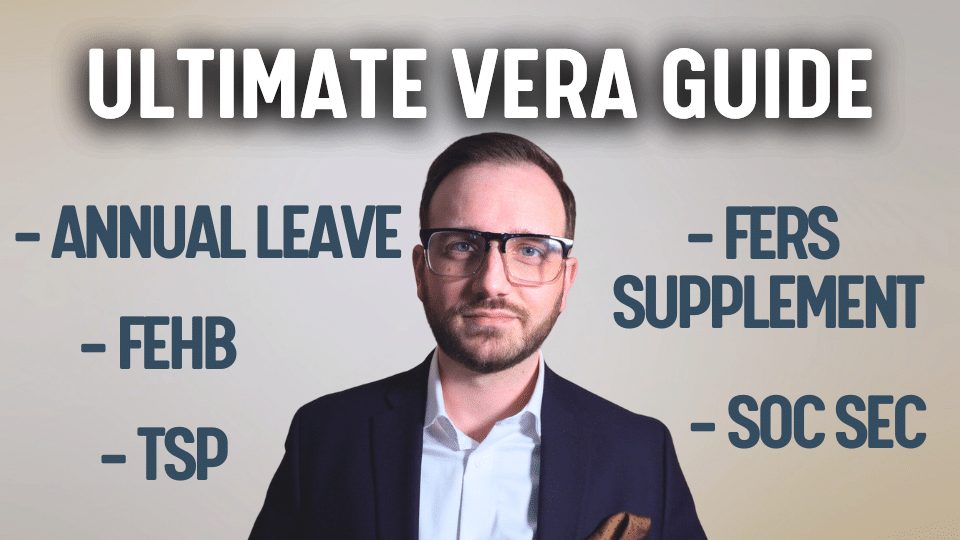5 Reasons to AVOID Roth TSP and Conversions
Have you ever wondered if you should be using the Roth TSP? We get this question from federal employees on a regular basis: To Roth or Not To Roth.
The concept of the Roth is relatively simple, but the process of determining whether a Roth makes sense for you can be quite complex. There are many potholes and easily made mistakes when doing Roth planning.
We all owe our fair share of taxes, and if not careful, we can put ourselves in higher tax brackets unnecessarily. Ask yourself this critical question, “How can I align my wealth in a way to pay the least amount of taxes during my lifetime?”
Taxes are a major part of your retirement planning, as any dollar you don’t owe in taxes is a dollar that gets to be spent on lifestyle or reinvested to grow for you.
This article will discuss when it may not make sense to use a Roth, as well as some big Roth mistakes we’ve seen federal employees make with their TSP.
The Upfront Tax Burden is Too Much
Using a Roth means that you owe the taxes immediately. This is true when making Roth TSP contributions or doing a Roth conversion.
If you make a $1,000 Roth TSP contribution, your taxes will be $200-$300 higher than if you had made a Traditional TSP contribution. This will vary depending on your tax bracket, but it is money does not have an immediate tax break.
Sometimes paying more in taxes today could mean paying little or no taxes in the future. But if cashflow is tight, you still need to make sure your present needs are being met.
The same is true of Roth conversions. Having the freedom of tax-free money in the future (or even just reduced taxes) comes with a price to pay today.
There’s no question that a Roth account is one of the best accounts you can own, but how do you justify a higher tax bill today for a tax break down the road? It’s a matter of understanding what the impact is of paying a higher, but manageable tax bill now on your overall savings, resulting in less taxes in the long run.
If You’re Leaving Retirement Assets to Multiple Children
The new inheritance rules for retirement assets requires beneficiaries to pull out all the money from the inherited retirement account within 10 years. If one child inherits an account, it’s probable that they must take around 10% each year so that it gets fully taxed at their tax bracket.
If they’re high earners (typically the case when inheriting), this could force them into a high tax bracket for a full decade, affecting much of the legacy you leave behind.
But what if you leave assets to multiple children? They each have 10 years during which they must make withdrawals.
If you have two, or three, or even four children that will inherit, each one of those children has a decade to pull out the assets and pay the taxes. The amount that must come out every year is now much less for each one of those individual children. With four children, that could be spreading out your retirement assets over 40 years.
For example, a $1M retirement account could amount to $100K per year in taxable income to one child. To two children, the total is still $100K annually, but each child bears $50K on their own tax bracket, assuming the assets are split evenly. Those dollars are spread more evenly in everyone’s tax bracket, resulting in a possibly lower tax bill. Leaving it to more children spreads it further.
By spreading out the dollars this much, they may only minimally increase your kids’ taxes, in which case it might make sense for them to pay the taxes during their lifetimes instead .
If You and Your Spouse Are Both High-Earners
If your household income falls into the higher brackets, doing a Roth right now could be detrimental to you. The tax-deduction of traditional retirement (pre-tax) contributions could be more meaningful in increasing your family’s wealth in the long run.
Often, we see that dual income families may be in the top brackets. It’s possible that your tax projections show that you may be in a lower bracket in the future.
If that’s the case, there may be a place for a strategy which involved delaying the use of a Roth until you reach your tax planning window.
You Anticipate Large Medical Bills
High medical expenses can often be used to offset your taxes. If you know or anticipate high medical expenses in your near future, perhaps you can offset the taxes from Roth conversions during years that you also have these higher deductions.
For example, someone that has high home renovation costs because of a long-term care situation may be able to use some of these expenses to offset taxes. We encourage you to work with a qualified tax professional to ensure this is the case.
Perhaps owing the taxes in years that coincide with these high deductions could help you save large amounts of taxes. Tax planning is without a doubt an area that adds massive value to our clients’ retirements, and we encourage you to explore this for your own retirement too.
If You Don’t Have Any After-Tax Savings
In a Roth conversion, you have the option of paying the taxes owed from the amount being converted or with dollars from other accounts.
Sticking with our example of 30% taxes all-in, a $100,000 Roth conversion would mean $30,000 in taxes. Rather than taking it from the $100,000 so that only $70,000 becomes Roth, you can pay the $30,000 taxes from another account, allowing the full $100,000 to become tax-free in your Roth.
We typically recommend this option, however it’s understandable that making such a tax payment can be difficult. This is why we encourage federal employees to diversify the taxability of their savings as well. Saving after-tax money is what we call your “back pocket” money. These are dollars that have already been taxed (unless grown by investing) and can be easily used for strategies like Roth conversions.
If you pay the taxes from the amount being converted, you start with a much smaller balance in your Roth, and it must work that much harder to make up the difference and regrow again.
This doesn’t mean that you shouldn’t do Roth conversions if you don’t have the cash, but it does mean you must make sure that the math works in your favor.
Mistakes When Using a Roth
Perhaps you’ve done the analysis and income projections, and you’ve decided that the Roth is right for you. A major mistake we’ve seen federal employees make is attempting to convert their Traditional TSP to a Roth.
First, you should know it’s not currently possible to move from Traditional TSP to the Roth TSP. But the TSP will send your Traditional TSP to a Roth IRA if you ask. However, in doing so, they will withhold a large portion of it as your tax payment, and you have very little control. The whole thing gets very sloppy and it’s likely not going to be accomplished in the best way possible.
The other big mistake federal retirees often make is not considering how using a Roth will impact other parts of their plan, such as Medicare Part B premiums. For all my Medicare participants, whether with Tricare or FEHB, Part B premiums are based on your taxable income.
If you increase your taxable income by contributing or converting to a Roth, tax savings can be wrecked by a large increase in your insurance premiums. Going even just $1 over the needed amount can cause this issue, so we recommend that you take caution.
Roth planning is a complicated but incredible tool you can use in your financial planning. Make sure you understand the nuances so that you can avoid costly mistakes and have a more successful retirement. After all, it’s not just your money, it’s your future.
If you’d like more of our content, you can find it here.



